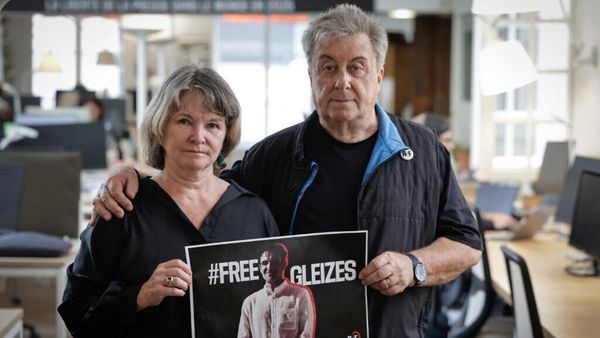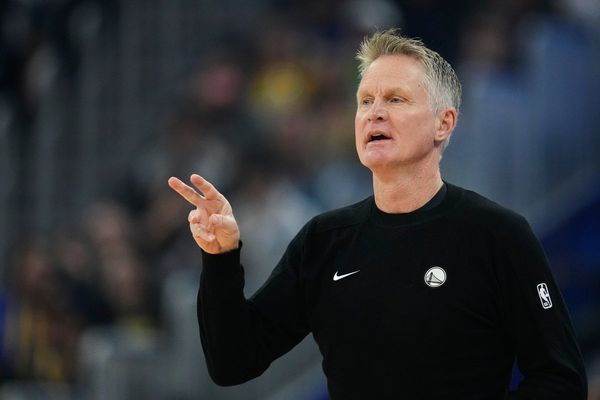
Cleo Laine, who has died aged 97, was not only the most creatively and materially successful jazz singer the UK scene has known, but was also respected worldwide as one of a handful of truly original jazz-inspired vocalists. From modest beginnings in the pubs and dancehalls of austerity Britain in the 1950s, the diminutive singer with the majestic and agile contralto voice went on to achieve international fame in a career that also embraced acting and writing.
Laine could travel easily in almost any idiom, from jazzy standards-singing to the frontiers of classical music and opera, and she was the only female singer to receive Grammy nominations in the jazz, popular and classical categories. When she became the first British artist to win a Grammy as best female jazz vocalist (for the third of her live Carnegie Hall albums) in 1985, she received two dozen roses from Ella Fitzgerald and a card inscribed: “Congratulations, gal – it’s about time!”
Even late in her career, Laine’s remarkable range, theatrical awareness of contrast and drama, sensitivity to melody and mood, and astute choice of high-class songs, prevented her from ever sounding remotely dated. Whether in coolly countermelodic duets with her husband John Dankworth, the alto saxophonist, in flat-out exercises in zigzagging scat or stomping swing, or in spacey moods of poignant reflectiveness, Laine was never less than the classiest of acts.
In 1997, she and Dankworth were, fittingly, given a Royal Albert Hall Prom concert in honour of their joint 70th birthdays. As long-time stars of a usually low-profile British jazz scene, they brought together the worlds of dinner-jacket arts and unruly jazz. They helped put British jazz on the map, encouraged music education, smuggled jazz into the sensibilities of listeners who had thought they loathed it, and generally added a splash of style and confidence to a sometimes shadowy and defensive subculture.
Laine’s onstage glamour would give way to a far more worldly and down-to-earth magnetism as soon as the spotlight was off. A candid and personable woman, she impressed those who met her with her easygoing alertness, unexpectedly small stature for those who had previously only encountered her on a concert stage, and penetrating green eyes framed by dark curls.
She was also – in the age of the ubiquitous psychotherapist – mock-guilty about her lightness of spirit, saying simply: “I’m not a very neurotic person.” This realism allowed her to consider both her talents and her shortcomings with neither self-importance nor guilt. She would occasionally ponder whether two parents spending a lifetime on the road was not textbook childcare by some standards, but pointed out the independence and self-reliance of her children with Dankworth – their son, Alec, became a successful double-bassist and bandleader, and daughter, Jacqui, a vocalist, actor and songwriter with much of her mother’s canny timing, emotional subtlety, and inclusiveness of taste.
Laine was born in Southall, west London, one of three children of a Jamaican father, Alexander Campbell, and an English mother, Minnie Bullock, who took in lodgers. Raised as Clementina Campbell (the fact that her birth had been registered under her mother’s name, before her parents married, did not emerge until she applied for a passport at 26, by which time she was performing as Cleo Laine), she showed early singing talent and was encouraged by her mother to take singing and dancing lessons.
After leaving school at 14, she found work in a hairdresser’s, milliner’s, pawnshop, cobbler’s and library, and married for the first time, to George Langridge, in 1947, while still in her teens. But she was restless and the example of her father – who sang, and loved music, but made his living selling goods door-to-door – had also given her an inkling that a life in music might provide an escape.
Modelling herself on the black singers she heard in American musicals such as Cabin in the Sky, she unintentionally developed a sound that was conspicuously different to that of most popular female singers of the 40s and early 50s. Choosing black artists seemed obvious to her, and the threatening implications of being in a racial minority in Britain were not as evident as they were to become later in the 50s. Laine recalled, however, that as a child during the second world war she had speculated on where children like herself might hide if nazism won.
In her mid-20s Laine began seriously to apply herself to singing. She had started out in pubs (“useful training for improvisation” she would ruefully recall) and eventually auditioned for the successful British modern jazz band led by Dankworth. Though she was a raw unknown, Dankworth and his musicians recognised her promise.
“I was amazed they liked me,” Laine told the Guardian in 1997. “I had begun to think auditions were my hobby, I’d been rejected on dozens of them, and talent competitions too.” But Dankworth was after somebody different, and Laine was unusual as a rich-toned contralto. She listened closely to Billie Holiday for her presence and sense of drama, Fitzgerald for the thought processes and technique that allowed her to improvise so exuberantly, and Sarah Vaughan for her operatic range. The mature Laine was to exhibit all these qualities.
She toured the UK extensively with the Dankworth band in the mid-50s. She divorced Langridge in 1957 and the following year married Dankworth, and shared the care of her first son, Stuart – by then 13 and sometimes a traveller with her on the road – with her mother and sister. She accompanied Dankworth to the US in 1959 for his appearance at the Newport jazz festival, and sang with the band at Birdland in New York on the same trip. She also began to read widely, and developed an enthusiasm for poetry – particularly that of ee cummings, one of whose pieces she was to record as a song.
She also started to act and was initially confined to Caribbean roles, but her skill bloomed, and she was to regard her appearances at the Edinburgh festival in the 60s and in A Midsummer Night’s Dream, 1967, as high points. But there were many others: Flesh to a Tiger, directed by Tony Richardson at the Royal Court theatre in 1958, the English musical Valmouth, the title role in Ibsen’s Hedda Gabler, plus musical appearances in Show Boat, Colette, The Seven Deadly Sins, A Little Night Music and The Merry Widow.
She also originated the role of Princess Puffer (and won several awards and nominations for it) in the Broadway hit musical The Mystery of Edwin Drood in 1985. She took on parts as diverse as the voice of God in the BBC Proms’ production of Benjamin Britten’s Noye’s Fludde (1990) and the Witch in Stephen Sondheim’s Los Angeles production of Into the Woods (1988).
She recorded prolifically in the 60s, on show-song and soundtrack projects (Dankworth was an in-demand movie composer at the time) and straight jazz albums with guests including the British sax virtuoso Tubby Hayes and her vocalist contemporary Annie Ross, and in that decade she was also a frequent guest on the British TV satire That Was the Week That Was.
Dankworth, meanwhile, had begun exploring jazz variations on non-jazz traditions in his own music, and broke through to a new public with arrangements of Shakespeare sonnets – Shakespeare and All That Jazz (1964), which won widespread acclaim and a five-star accolade in the US magazine DownBeat. Laine took to them eagerly – on slow pieces such as O Mistress Mine and Shall I Compare Thee to a Summer’s Day, she showed a remarkable ability to make the quietest sounds ring like tiny bells, and then be enveloped in a wash of resonant low notes.
Classical audiences, too, were now beginning to wake up to Laine’s skilful control, rich tones and spontaneous jazz sensibility. She was Julie in the spectacularly successful 1971 London production of Jerome Kern’s Show Boat, made an acclaimed New York debut in 1972 and the first of her Carnegie Hall appearances (her Live at Carnegie Hall album from 1974 brought her a first Grammy nomination), and further expanded her palette in recording Arnold Schoenberg’s poetry-cycle Pierrot Lunaire, which was nominated for a classical Grammy. Despite an increasingly frenetic working life, she and Dankworth also oversaw the development of their Buckinghamshire home at Wavendon as a working theatre.
Over the next decades, Laine collaborated with the flautist James Galway (1980) and classical guitarist John Williams (1984), contributed to Michael Tilson Thomas’s LSO series The Gershwin Years (1987), and a tribute to female songwriters including Joni Mitchell and Holiday (Woman to Woman, 1989). Her bluesily soulful encounter with Ray Charles (Porgy and Bess, 1976) was a highlight, as was a hip and swinging meeting with Mel Tormé (Nothing Without You, 1992). Laine also appeared alongside Frank Sinatra during a week of concerts at the Royal Albert Hall in 1992.
Following her autobiography, Cleo (1994), Laine also published You Can Sing If You Want To (1997) – an informal guide to learning to use the voice freely and confidently as an instrument.
The Dankworths slowed down only marginally in their 70s – their concerts worldwide still continued to sell out – and when Laine hit 80 in 2007 (Dankworth’s 80th having preceded hers by a month), she performed a series of UK shows, including a reunion of the John Dankworth Sextet that had set her stardom in motion. A four-disc box set, I Hear Music, was released documenting the pair’s work from 1944 to 2005.
Dankworth’s health declined late in 2009, on a US tour that had to be curtailed. He died on the morning of 10 February 2010. He and Laine, plus a glitzy cast of guests, had been due to play at Wavendon that night, to celebrate the 40th anniversary of the Stables theatre. Impelled by the conviction that Dankworth would have wanted the celebration to go on, Laine went home from the hospital, played the gig, and broke the news of his death to a stunned audience only at the close.
She continued to perform for some years, frequently with a Dankworth rhythm section including Alec on bass and the pianist John Horler, thus demonstrating, as at the Cheltenham jazz festival in 2011, that Laine could still deliver a classic jazz song such as Duke Ellington’s Creole Love Call with a freshness not far away from Adelaide Hall’s 1920s version of the original.
Laine and Dankworth foresaw the contemporary developments that have led to the growing embrace of jazz innovation by audiences coming from the European art-music tradition, from western pop, or from cultures unrelated to either. Laine would readily agree that grand opera at its best was “glorious … but Louis Armstrong is glorious, too, and operatic in his own way”.
For her musicianship, and for that breadth of view, she acquired a raft of accolades and prizes, and in 1997 she was made a dame. Her achievements were a rich blend of the creative journey and the crusade, qualities of a musical life that she and Dankworth conducted with the lightest of touches. Despite all the globetrotting, the jet-lag and the impossible schedules, it seemed more fun to them than working.
Stuart died in 2019. Laine is survived by Alec and Jacqui.
• Cleo Laine (Clementine Dinah Bullock), singer and actor, born 27 October 1927; died 24 July 2025







